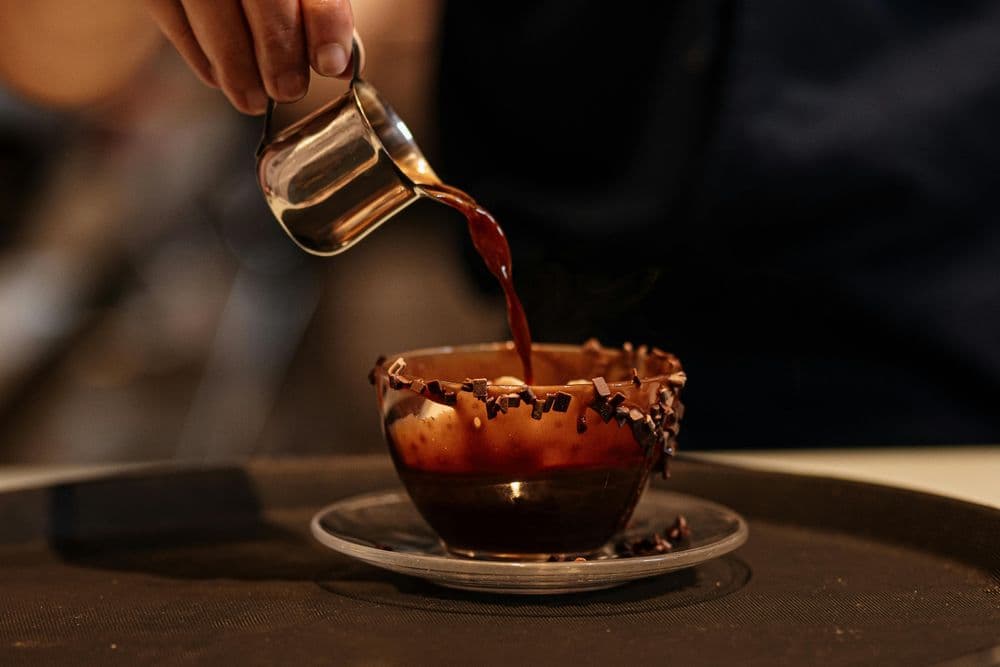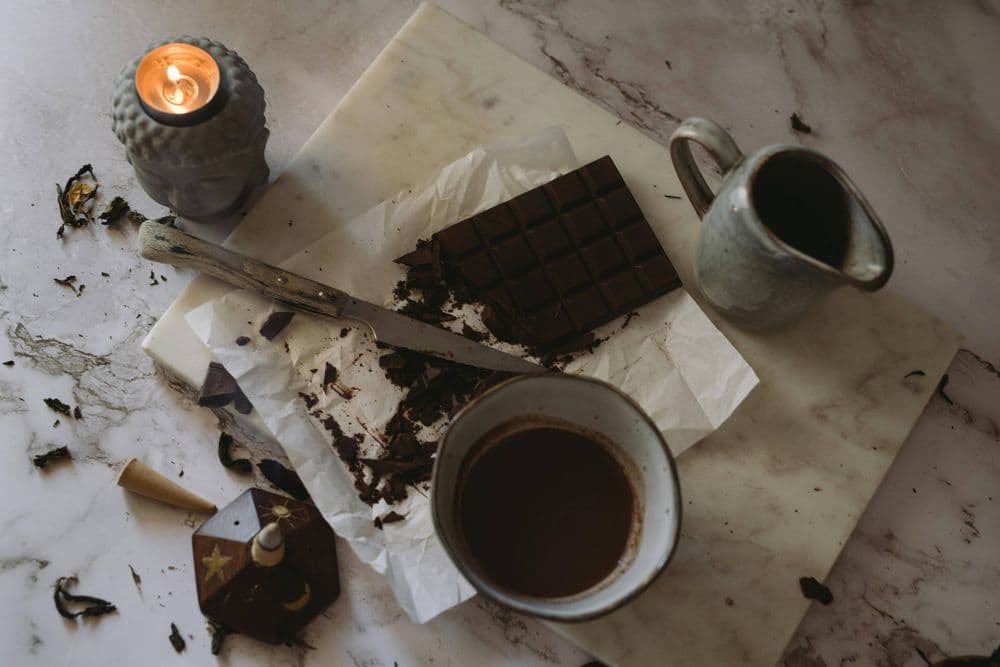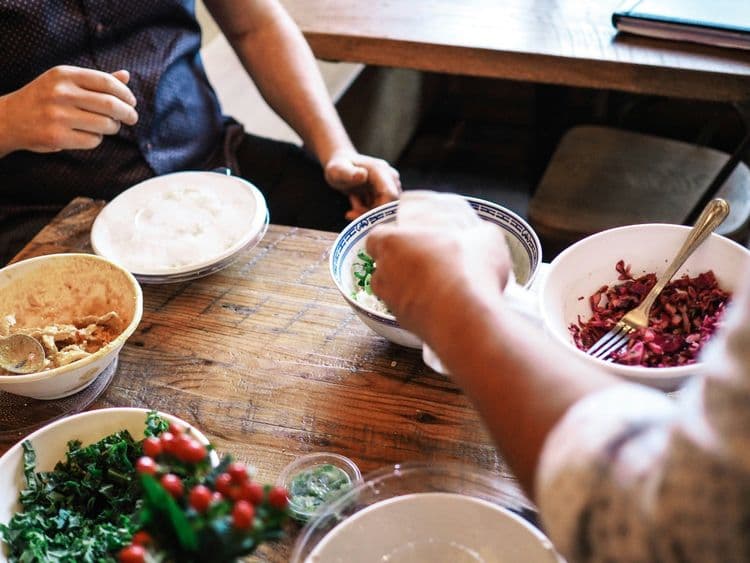A Nourishing Drinking Chocolate Recipe (With Adaptations)

Chocolate has captivated hearts and palates for centuries with its alluring aroma and complex flavors. But did you know that drinking chocolate was once considered a powerful medicine? Keep reading to learn more about this beloved beverage and its potential health benefits, and then create your own delicious cup at home.
A brief history of drinking chocolate as medicine
The story of chocolate begins with the ancient Mesoamerican civilizations, notably the Mayans and Aztecs. These cultures revered the cacao tree and its beans, believing them to be gifts from the gods. They used cacao in various rituals and ceremonies but recognized its potential medicinal properties.1
Drinking chocolate, known as "xocolatl" in the Aztec language, was a far cry from the sweet, creamy beverage we know today. It was often prepared as a bitter, frothy drink, sometimes mixed with spices like chili peppers. The Aztec emperor Montezuma II was said to consume large quantities of this drink, believing it to be an aphrodisiac and a source of wisdom and power.2
When Spanish conquistadors brought cacao back to Europe in the 16th century, it quickly gained popularity among the nobility. European apothecaries began experimenting with chocolate as a medicine, attributing to it a wide range of curative properties. They believed it could treat ailments such as fatigue, fever, and even heart problems.3
Throughout the 17th and 18th centuries, ‘chocolate houses’ became popular gathering places in major European cities. Similar to modern-day cafes, these establishments served hot chocolate and were gathering places for intellectual and political discourse. Drinking chocolate was still considered a luxury item and was often prescribed by doctors for various health concerns.4
Realize the potential health benefits of chocolate
While the ancient claims about chocolate's medicinal properties may have been exaggerated, today, we know that chocolate, particularly dark chocolate with high cacao content, offers some health benefits.
- Rich in Antioxidants:
Cacao is packed with flavonoids, which are potent antioxidants that can help protect cells from damage caused by free radicals. 5 - Heart Health:
Some studies suggest that regular consumption of dark chocolate can support healthy blood pressure and improve blood flow. 6 - Mood Booster:
Chocolate contains compounds that can stimulate the production of endorphins, potentially improving mood and reducing stress .7 - Cognitive Function:
The flavonoids in chocolate may help improve cognitive function and protect against age-related cognitive decline. 8 - Skin Health:
The antioxidants in chocolate could potentially protect the skin from UV damage and improve skin hydration. 9
Pay attention to contraindications and considerations
An important point for our Viome community. If cacao appears on your Viome recommendations as a food to avoid or minimize, don't worry – you're not alone; nearly 28% of Viome users have cacao as an Avoid, and 17% should Minimize their consumption—and there's a good reason for it. Your microbiome and metabolism might be sensitive to certain cacao compounds, which could contribute to an inflammatory response or other unwanted problems in your body.10
For those who need to avoid or minimize cacao, consider these alternatives:
- Carob-based drinks (naturally caffeine-free and often gentler on the digestive system)
- Roasted dandelion root beverages (offers a rich, complex flavor profile)
- Golden milk with turmeric and warming spices
- Rooibos tea with vanilla and spices
Your Viome recommendations are personalized to your unique biology, so always prioritize these insights when making dietary choices.
While chocolate can be part of a healthy diet for many people, there are some additional considerations and potential contraindications to keep in mind:
- Caffeine Sensitivity:
Chocolate contains caffeine, which may cause issues for those sensitive to its effects or trying to limit caffeine intake. - Sugar Content:
Many commercial chocolate products are high in sugar, which can be problematic for people with diabetes or those trying to manage their weight. - Migraines:
Some individuals report that chocolate can trigger migraines or headaches. 11 - Acid Reflux:
The caffeine and other compounds in chocolate may exacerbate symptoms of acid reflux in some people. - Allergies:
While rare, some individuals may be allergic to chocolate or other ingredients commonly found in chocolate products.
As with any dietary change, it's always best to consult a healthcare professional if you have concerns about consuming chocolate.

Make this Drinking Chocolate Recipe
Ready for a taste? Indulge your senses with this recipe, combining the deep, complex flavors of high-quality dark chocolate with a hint of warming spice for a truly luxurious experience.
Ingredients:
- 4 ounces of high-quality dark chocolate (70-85% cacao), finely chopped
- 2 cups whole milk (or a plant-based alternative for a dairy-free version)
- 2 tablespoons unsweetened cocoa powder
- 2 tablespoons brown sugar (adjust to taste)
- 1/4 teaspoon ground cinnamon
- Pinch of sea salt
- Optional: a dash of vanilla extract or a pinch of chili powder for extra flavor
Instructions:
- In a medium saucepan, whisk together the milk, cocoa powder, brown sugar, cinnamon, and salt over medium heat.
- Bring the mixture to a simmer, stirring constantly to prevent scorching.
- Once simmering, remove from heat and add the chopped chocolate. Let it sit for a minute to melt.
- Whisk the mixture vigorously until the chocolate is fully incorporated, and the drink is smooth and frothy.
- If desired, add a dash of vanilla extract or a pinch of chili powder for extra depth of flavor.
- Pour into mugs and serve immediately. Top off with a dollop of homemade whipped cream, a sprinkle of cocoa powder, or extra chocolate shavings for an extra indulgent touch.
Try these tips to make a perfect cup
- Choose quality chocolate:
The flavor of your drinking chocolate will largely depend on the quality of the chocolate you use. For the best flavor and health benefits, opt for a high-quality dark chocolate with at least 70% cacao content. - Experiment with milk alternatives:
While whole milk creates a rich and creamy drink, don't be afraid to experiment with plant-based alternatives like almond, oat, or coconut milk for different flavor profiles (according to your Viome recommendations). - Add spices:
Enhance your drinking chocolate with spices like cinnamon, nutmeg, or even a pinch of chili powder for a nod to its Mesoamerican roots. - Use a blender:
For an extra frothy and smooth drinking chocolate, try blending the final mixture in a blender for a few seconds before serving. - Adjust sweetness to a minimum:
The beauty of making your own drinking chocolate is that you can control the sweetness and the types of ingredients. Start with less sugar and adjust to your taste preferences.
Explore new varieties and flavors
Interest in high-quality drinking chocolate continues to grow; artisanal chocolate makers and cafes around the world are serving traditional preparation methods and experimenting with new flavor combinations. This trend aligns with the growing appreciation for craft foods and beverages and an increased awareness of the origin and quality of ingredients.
Some popular trends in the world of drinking chocolate include:
- Single-Origin Chocolates:
Much like coffee, chocolate enthusiasts are exploring the unique flavor profiles of cacao beans from specific regions. - Ceremonial Cacao:
Drawing inspiration from ancient Mesoamerican traditions, some people are embracing cacao ceremonies as a form of mindfulness and connection. - Functional Chocolate:
Brands are creating drinking chocolate blends infused with adaptogens, herbs, or other supplements, marketing them as wellness drinks. - Vegan and Alternative Options:
With the rise of plant-based diets, more dairy-free drinking chocolate options are now readily available.
Whether you're sipping a cup for its potential health benefits, indulging in a moment of luxury, or connecting with chocolate's rich cultural history, drinking chocolate offers a unique and satisfying experience.
So the next time you're in the mood for something warm, comforting, and deliciously indulgent, why not brew a cup of homemade drinking chocolate? It's not just a treat for your taste buds; it's a journey through time and culture, all in a single mug.
References
- Cruz, M. de la, & Badiano, J. (1940).. Johns Hopkins Press.
- Sahagún, B. de. (1577). World Digital Library.
- Colmenero de Ledesma, A. (1631). Biblioteca Nacional de España.
- Coe, S. D., & Coe, M. D. (2013). Thames & Hudson.
- Grassi, D., et al. (2005). American Journal of Clinical Nutrition, 81 (3), 611–614.
- Ludovici, V., et al. (2017). Frontiers in Nutrition, 4 , 36.
- Francis, S. T., et al. (2006). Neuropsychopharmacology, 31 (11), 2356–2366.
- Crichton, G. E., et al. (2016). Appetite, 100 , 126–132.
- Heinrich, U., et al. (2006). Journal of Nutrition, 136 (6), 1565–1569.
- Based on data collected from our users in February 2025. All data collected with consent from our users.
- Nowaczewska, M., et al. (2020). Nutrients, 12 (8), 2259.

